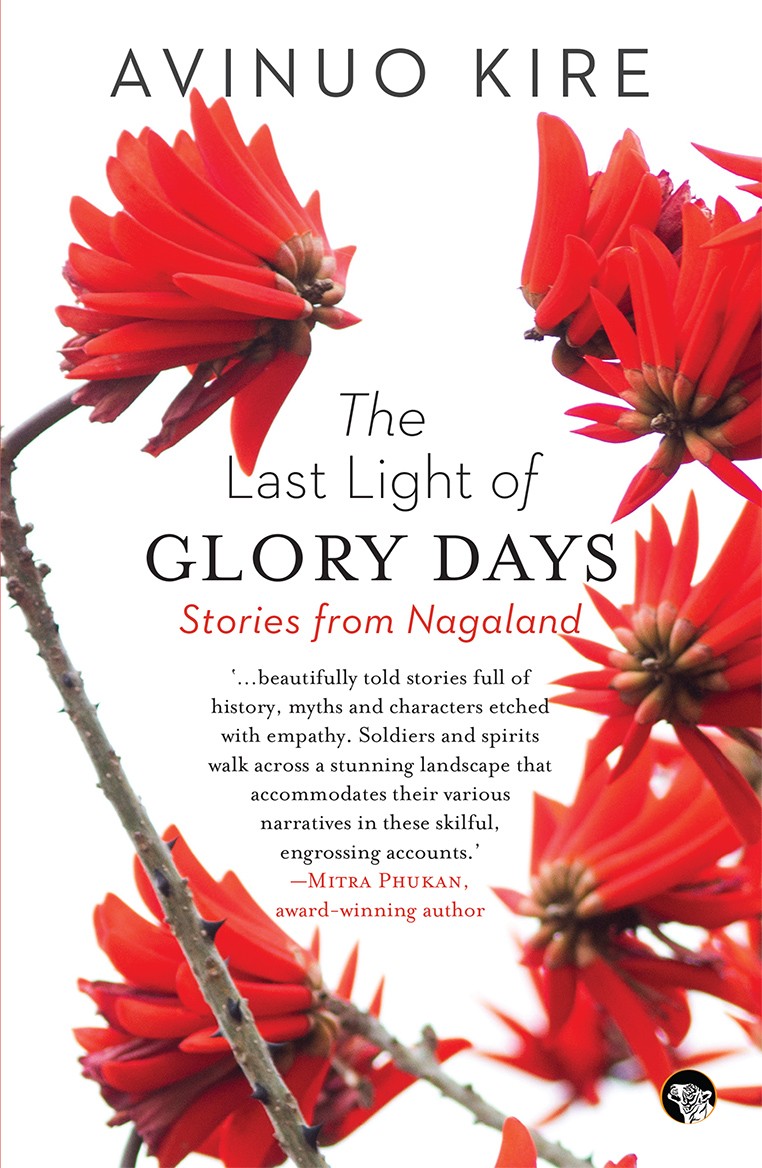
Book Review by Vishü Rita Krocha
“Let us turn into flowers then! When we bloom people will gaze at our beauty and have joy always…” - The Angami Naga folk tale of Hutuo and Teguo
It is almost time for ‘Hutuo’ and ‘Teguo’ to start blooming again. Somehow, the sight of these blooming trees has always reminded me of Avinuo Kire, a storyteller par excellence. And now, it won’t just be the season of ‘Hutuo’ and ‘Teguo’ but also a book cover and its gripping stories that will carry her image in my mind.
The above quote is taken from the story, ‘Flower Children’ that appears in Part One of ‘The Last Light of Glory Days: Stories from Nagaland’ by Avinuo Kire. Published by Delhi-based publishing house, Speaking Tiger, this latest collection by her, opens an often-forgotten world, especially for people of my generation who grew up either partially seeing or listening to experiences of the Indo-Naga conflict. The Part One of the book which is categorized as “The Disturbance” constantly reminded me of my grandparents and their lived experiences of those disturbing years.
My maternal grandmother who lived to be 104 would tell us stories of how my village was burnt down several times and how they ran for their lives; that they found refuge in the goodness of nature far away in the jungle and were very careful when making fire so the smoke wouldn’t give them away.
And one day, after they have returned back to the village and started rebuilding their lives, she said, an incident led to all the menfolk being commanded to do sit-ups in twos, facing each other and pulling each other’s ears, shouting ‘Jai Hind!’ My father’s childhood was made of such memories. Of bleeding ears from being pulled for too long.
Most elders I know have scattered memories of ‘The Disturbance’ but there are also those, whose lives have forever been impacted by it. “A hundred years will not change the fact that Indians tortured and murdered my only brother.” I am sure this bitter truth uttered by the grandmother in ‘Sharing Stories’ in the first part of the book is a shared feeling of many Nagas who lost a loved one to the conflict. In Part One, with just three short stories, Avinuo Kire skillfully manages to capture the essence of the Indo-Naga Conflict.
In Part Two, aptly titled— “New Tales from an Old World” emerges stories that are brilliantly woven together with folk elements and everyday life. It opens with a captivating story, ‘The Memory Healer’, a story that has reconfirmed my belief that people do find healing in pouring their hearts out.
“And to these shielding hills instead, I whispered my memories, setting free the unbearable, the dull aches, not sparing even the littlest twinges.” That, sometimes, it may not necessarily be a person that you pour your heart out to, but I guess it also means ‘healing’ to just let it go- whatever burden it is that you are carrying.
After reading ‘Longkhum’, the last story in the collection, it left me wanting for more. It has been a while since I last read a book and felt that way. You know the kind of book that haunts you (in a good way) and you need some time to get over it before you can move on to another book? “The Last Light of Glory Days” gives you that feeling. Something that booklovers will understand and resonate with. Needless to say, it is hard a pick a favourite from this collection because each of the stories will leave an impact on the reader.




